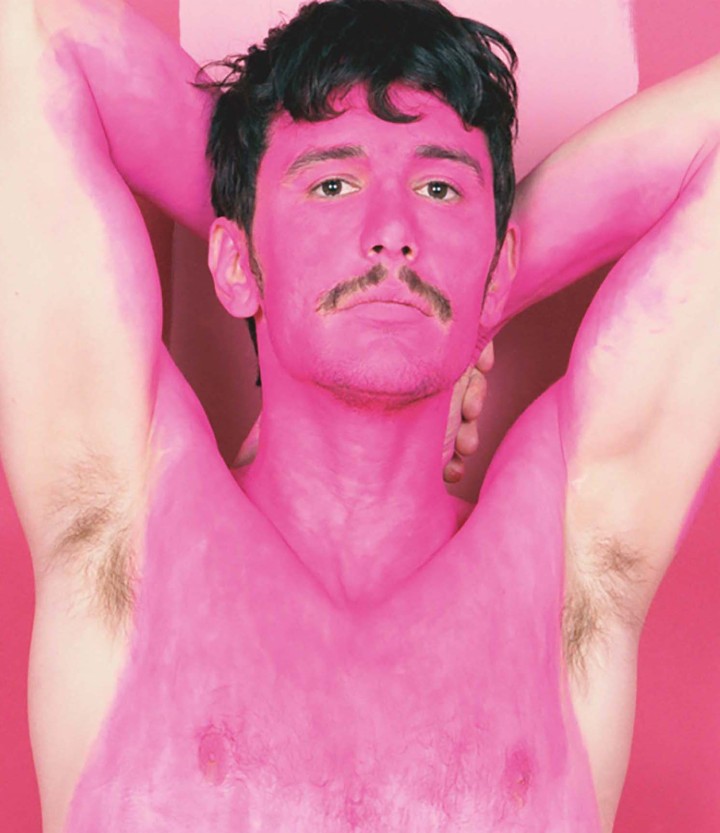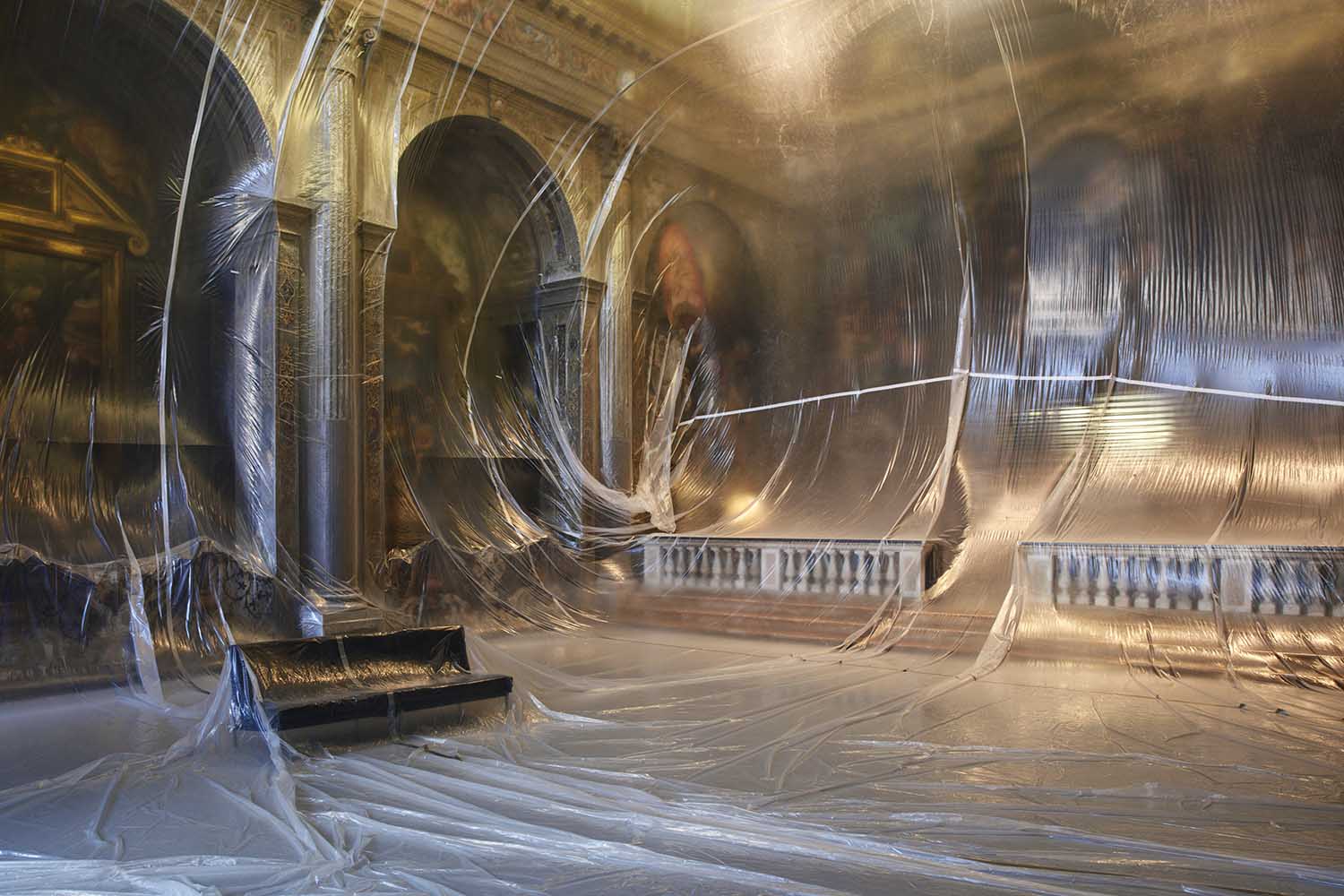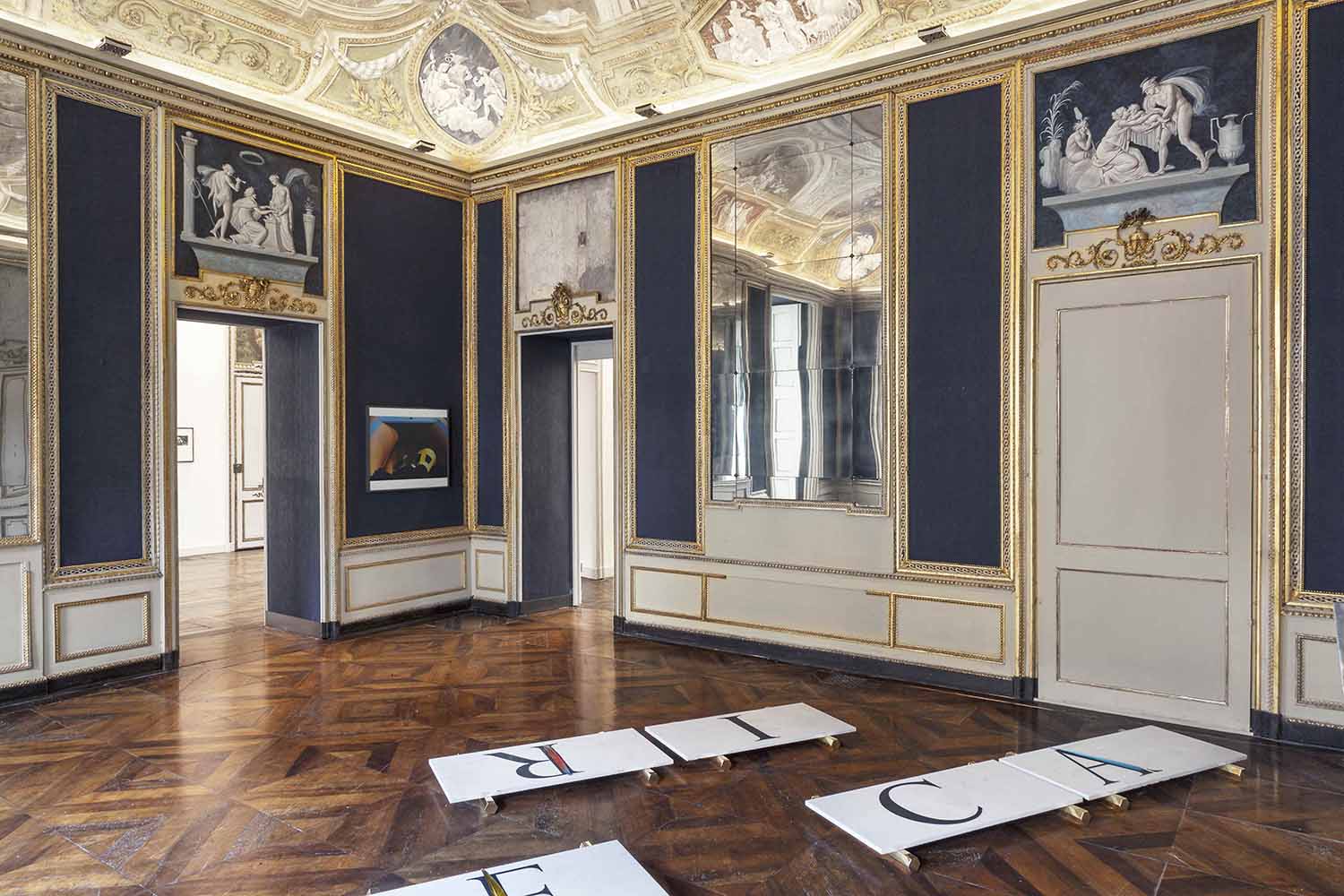Tatiana De Pahlen and Gea Politi talk with artist, performer and actor James Franco.
Gea Politi: Is there a “force” like the one in Star Wars? Or was Hunter S. Thompson right — there is no force at all, and thus no hope?
James Franco: There is a force, whether it comes from out there or from within us. I have seen people recover — make something of their lives through spiritual means. I don’t know if this spirituality comes from within, a kind of focus, a tuning in to an energy; or if the force is something outside of us. I don’t really need to know.
Tatiana De Pahlen: Your work is transversal on so many levels. You seem to revisit the notion of the “total artist” in contemporary culture. Would you define yourself as a Renaissance man?
JF: Crossing boundaries is how I like to define myself. I like to sit on the borderline between mediums and practices. When I was only an actor, my potential for expression was limited. I needed to find other outlets. But once I found those outlets, I became a better actor, because my acting became more pure. I wasn’t trying to write and direct when I was acting: I was finally just acting. When I was hired as an actor I could focus on that, on my job as an actor, because I knew that I could write or direct or do whatever on other jobs.
I am also very interested in the way that mediums are translated into new forms. When I direct a film I always adapt the story from a source, usually a novel or a nonfiction book. Mostly because I love collaboration, and adaptation is a kind of collaboration — collaboration with the writer of the book. I do a lot of things, but they all derive from the same place; they all address my interests. Some forms fit certain subjects better than others.
GP: Actor, film director, screenwriter, artist: Which one of these practices would you prioritize? With what form of expression are you most comfortable?
JF: I am most comfortable with acting because I have done it for so long. But I am drawn to directing because it involves telling the story from a more central perspective — it involves more collaboration.
TDP: What was your most formative art experience? And what film was most formative?
JF: Probably working with artists. I’ve gotten to work with Paul McCarthy, Josh Smith, Douglas Gordon, Laurel Nakadate, Ryan Trecartin, Kalup Linzy and Aaron Young. Working with artists, just like working with actors and directors, shows you how others work from an insider’s perspective. You get to really experience the process.
Working with great directors has changed me. Robert Altman, Danny Boyle, Harmony Korine, Gus Van Sant, Sam Raimi, Michelle MacLaren, Seth Rogen, theater director Anna Shapiro, David Gordon Green, and show runner David Simon have all given me something.
GP: Do you mean to provoke the art world? Maybe sometimes? Maybe unconsciously? Is there irony in your recent artworks?
JF: I’m not trying to provoke, but yes, there is irony. I know that I am an outsider — that my entry into the art world is automatically viewed with skepticism. So I try to acknowledge my outsider status with humor and irony. I know I can’t hide that I am a celebrity entering the art world, so I try to address it in the work.
GP: Painting seems to be the weakest of all the practices you are mastering. It’s not only critics who think so — the general public doesn’t seem to take your painting very seriously.
JF: Well, they’re pretty simple paintings. It’s obvious that I’m not trying for something complex or technically skilled. Their significance is supposed to come from the subject matter, the humor, and the fact that I did them. They’re almost like a performance.
And it’s easy to criticize an actor’s painting, just like it’s easy to criticize an actor’s writing. People can’t see past the fact that I’m an actor, so I make the paintings humorous. But the fact that I don’t have to paint, that I don’t have to put my stuff out there — but I do — should say something. I have a career. I don’t need another one. I do it because it’s a form that is important to me. It’s a conversation I want to be a part of, and I think I have something to contribute. Even if it’s a silly contribution.
GP: Can you tell me more about the series of birds you showed in Gstaad at Siegfried Contemporary? Animals seem to be a recurring theme in your practice. The works are painted in a childlike manner, almost as if they were made by an outsider artist.
JF: I wanted a subject that wasn’t connected to anything in the art world or the movie world. They are connected to my childhood. I grew up in the suburbs, and there were always birds around, especially humming birds because my mother had a bird feeder in the backyard. Like many of the things I do — my books, my art — they are a connection to my youth. Youth is one of my subjects.
TDP: The process of learning seems to be a pivotal aspect of your personal growth. Are you more of a student or a teacher? You come from an academic background, and I believe your mom is also a teacher. What do you find in education? And are you more of a student or a teacher?
JF: I love being a beginner. I used to have a fear of trying new things. At one time I was afraid of acting, but then I did it, and I worked at it and I became an actor, and now I’m accepted as an actor. I don’t need to be a master at everything I do; I just need it to express a certain aspect of myself, an aspect that wouldn’t be captured otherwise. Or wouldn’t be captured in just that way. So, I am always a student.
But teaching is an incredibly rewarding part of my life. Teaching at universities, high schools and at my own school puts me in touch with students that are still pure — they’re still making things for the love of it.
GP: How important is art history to your filmmaking? Do you think it has any impact? Do you recall your first memorable interaction with an artwork or artist? Did you visit museums as a child?
JF: It’s always been important. My parents and grandparents would always take us to museums. My grandmother and my uncle deal in Japanese art, and my grandfather was an amateur artist, so it was always around. One summer my grandparents took me to Japan to visit with the artists that my grandmother represents, and for the first time I saw artists who made a living as artists. They would just get up and paint every day. That was very influential because I saw that they were actually just doing it.
Later they took me to a traveling Monet show, and the paintings were huge. I think the size had a big impact on me. And then Picasso, and I saw the endless experimentation. Warhol, the same thing — that he was experimenting with form endlessly. Later, people like Jack Smith, Paul McCarthy and Vito Acconci showed me different ways that performance could be altered from a naturalistic approach.
TDP: What do you think about the performance of a public persona as demanded by media?
JF: I don’t know what this question means. But I think you’re asking about the way that a public persona is a kind of performance. It is something that I am very interested in because the public person is a shared creation. The individual is not the only author of this persona — there are many contributors: different media outlets, the movies this person performs in (if we’re talking about an actor), the way he is written about, the way people talk about him, etc. I am very interested in this creation. It becomes material for me to mold.
Tatiana De Pahlen: Have you followed Hulk Hogan vs. Gawker?
JF: Only a little. Gawker is scum.
TDP: It seems that even among academics (e.g. Rachel Dolezal), identity is radically subjective — something to be slipped into and out of. In your experience, is being a performer in the film industry different than the “performative” role of the artist?
JF: I love this idea because it’s something I understand deeply. I think life is a performance. Every day we choose our “wardrobe,” style our hair, put on our make up, go out into the world and play our role. We have things that are imposed on us, like who our family is, where we were born, just like characters in movies, and then we make choices about how we deal with our situations, what we study, what we do for a living. Sometimes we’re just trying to get by; sometimes our choices are made for other reasons. But these are essentially the things that an actor determines when he creates a character: He figures out what makes the character tick, why he makes different decisions.
The performance of life can be altered, just as an actor can play different characters.
TDP: Do you watch reality television?
JF: Not really. I watch a lot of documentaries.
GP: What do you think about the many extremely successful television series that have come out over the past two years? Would you say TV series are a kind of “new literature”? Do you think TV is better than cinema in 2016?
JF: I just acted in and directed part of a Stephen King miniseries called 11/22/63, and I’m going to be part of a David Simon (The Wire) show on HBO called The Deuce, so I have been watching a lot of the new television series. Without a doubt they are a new kind of literature. Movies are generally like short stories because of their length — they generally have one rising arc and one climax. But a series can have multiple arcs and storylines, more like a novel.
In Fitzgerald’s last, unfinished novel, The Love of the Last Tycoon, he paints the head of production at the studio, Monroe Star (based on Irving Thalberg), as an all-powerful creator. He controls everything at the studio, from the scripts, to the casting, to the directing. It seems unrealistic — not exactly how movies work — a novelist’s ideal version of how movies are made. Novelists have total control over their work, they don’t have to collaborate, but movies are incredibly collaborative. That being said, the show runners of the new television series are much more like Monroe Star. Many of them are collaborative, but they are in a position where they can control all aspects of the series, much like Monroe Star. So, in that sense they are like novelists, controlling every aspect of their creation.
TDP: What do you think about “reel” life in “real” life?
JF: I’m not quite sure what this means. But like I’ve been saying, my public persona, my movie persona, is inextricably bound up in my actual persona. The public persona is me and it isn’t me. I identify with parts of it and other parts I don’t, but it’s still part of me somehow.
GP: Why do you think you make and create so much throughout the year? Does one project feed another? What are you trying to build?
JF: Creation is how I engage with the world. It’s how I socialize (there is nothing more bonding that creating with others), it’s how I make a living, it’s how I relax, it’s how I communicate, it’s how I interpret the world around me. Harmony talks about all-around creation like it’s building a house. As Fassbinder said, one project is the kitchen, one is the bedroom, and one is the bathroom. They aren’t all the grand living room. Sometimes you’re just making the toilet, but everything is needed to make the house.




